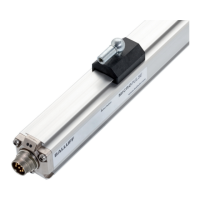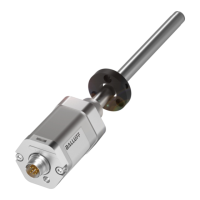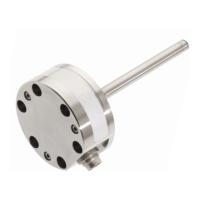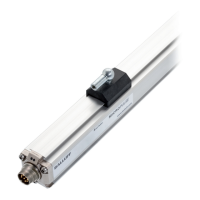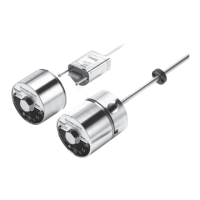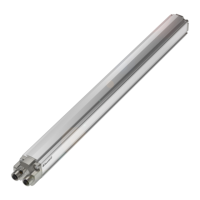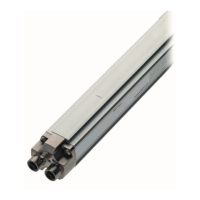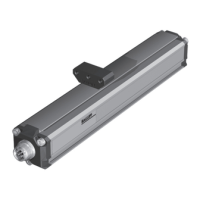14 english
6
SSI interface
6.1 Principle
SSI stands for Synchronous Serial Interface and describes
a digital synchronous interface with a differential clock line
and a differential data line.
With the first falling cycle edge, the data word to be output
is buffered in the transducer to ensure data consistency.
Data output takes place with the first rising cycle flank, i.e.
the transducer supplies a bit to the data line for each rising
cycle edge. In doing so, the line capacities and delays of
drivers t
v
when querying the data bits must be taken into
account in the controller.
The max. clock frequency f
Clk
is dependent on the cable
length (see Technical data on page20, Fig. 8-2). The t
m
time, also called monoflop time, is started with the last
falling edge and is output as the low level with the last
rising edge. The data line remains at low until the t
m
time
has elapsed. Afterwards, the transducer is ready again to
receive the next clock package.
k
ta
T
Clk
t
v
t
v
Clk
Data
MSBLSB
T
Clk
1234 5nn+1
t
m
Clk
Data
T
A
T
Clk
= 1/f
Clk
SSI clock period, SSI clock frequency
T
A
= 1/f
A
Sampling period, sampling rate
n Number of bits to be transmitted (requires n+1 clock impulses)
t
m
= 2·T
Clk
Time until the SSI interface is ready again
t
v
= 150ns Transmission delay times (measured with a 1m cable)
With the BTL7-S5_ _B-M…, position data is determined
and output in a timely manner and synchronous to the
external sampling period. For synchronous operation, the
sampling period T
A
must be in the range
T
A,min
≤T
A
≤16ms. The transducer switches to
asynchronous operation outside of this range. If the
minimum sampling time is undercut, the transducer
outputs the same position value several times. The
external sampling rate is then greater than the internal rate.
In addition, T
A
must be long enough so that the next clock
package does not occur in the t
m
range of the previous
package.
BTL7-S5 __ (B)-M ____ -A/B/Y/Z(8)-S32/S115/S140/S147/KA __ /FA __
Micropulse Transducer - Rod Style
